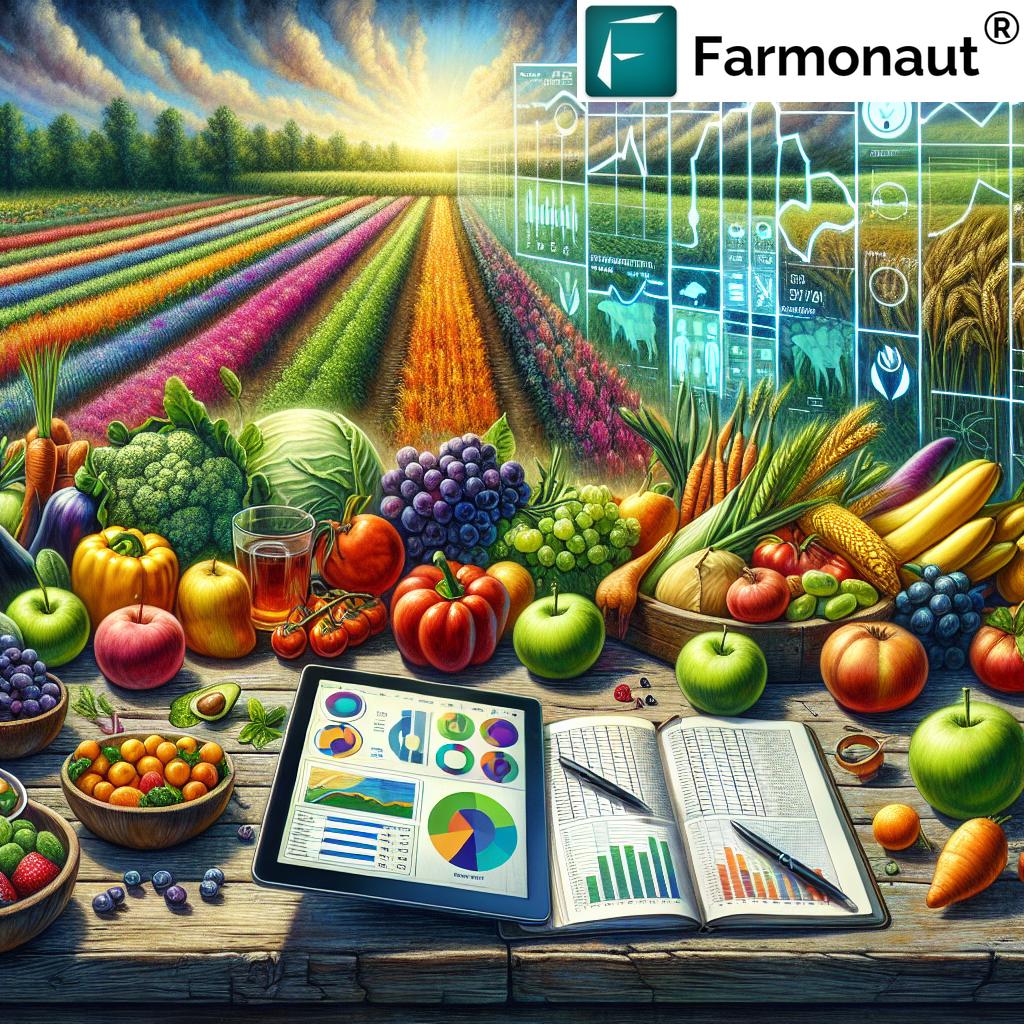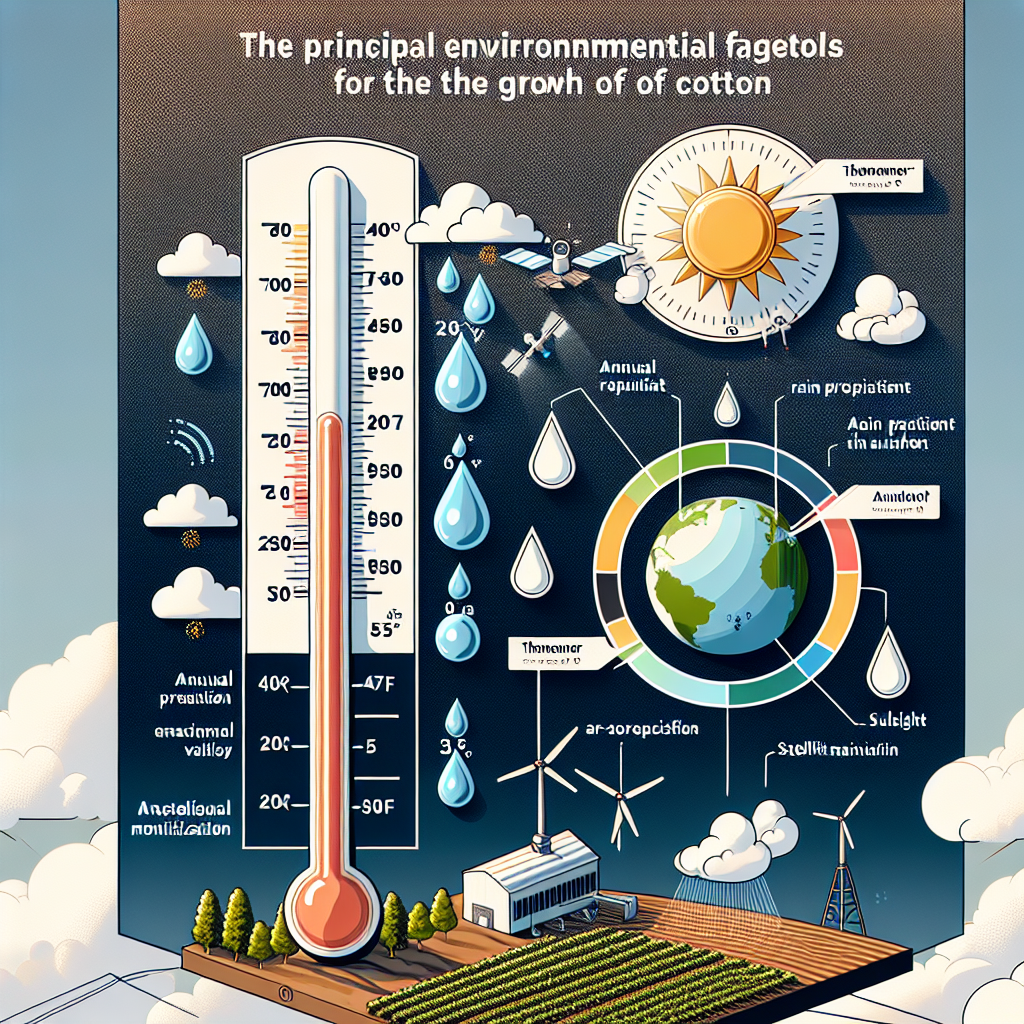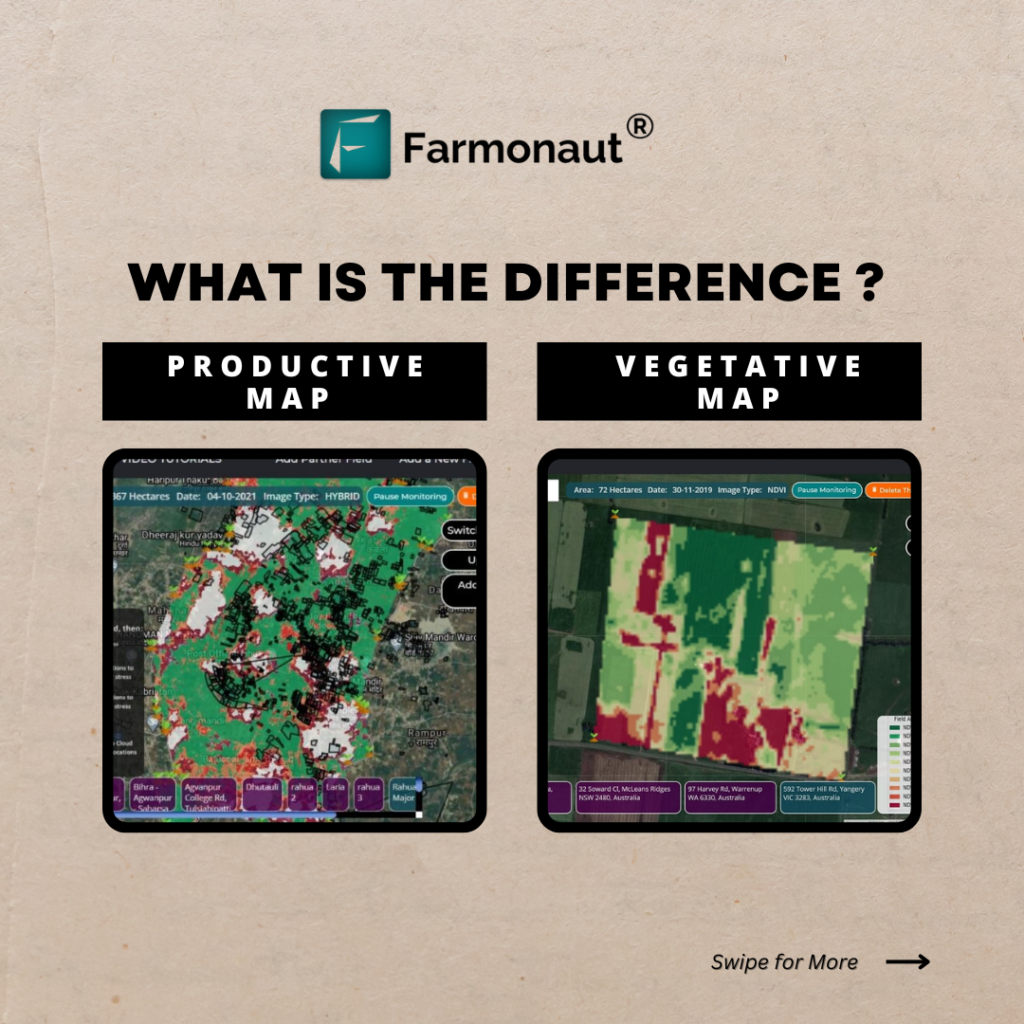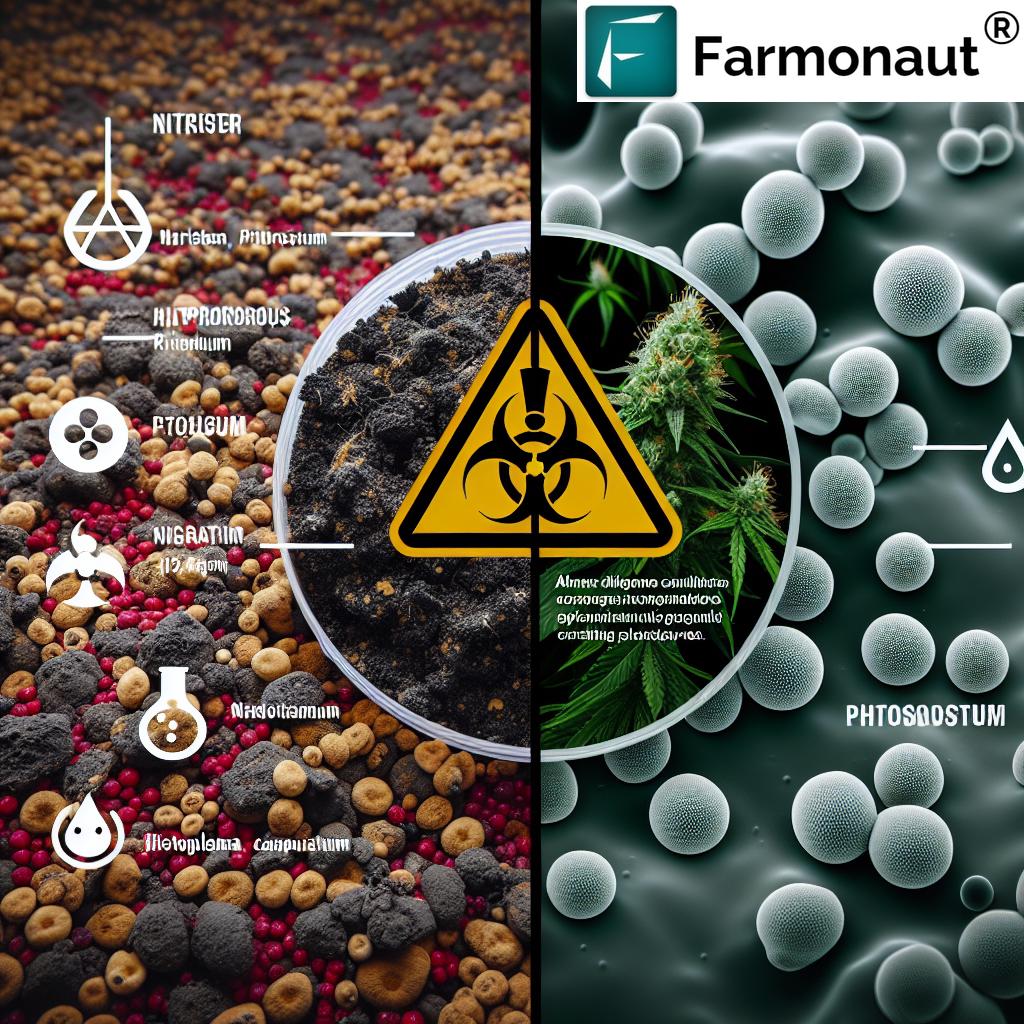Unlocking Healthy Eating Habits: How Age, Education, and BMI Impact American Food Consumption Patterns

In today’s fast-paced world, understanding the intricate relationship between our eating habits, health, and various demographic factors has become more crucial than ever. As we delve into the fascinating realm of food consumption patterns in the United States, we uncover surprising insights that shed light on how age, education, and Body Mass Index (BMI) influence our dietary choices and time spent on food-related activities.
“Adults with higher education levels spend up to 25% more time on primary and secondary eating activities.”
At Farmonaut, we believe that understanding these patterns is not just about personal health; it’s about reshaping our approach to agriculture, nutrition, and rural development. As we explore the latest research findings, we’ll uncover how these insights can impact farmers, policymakers, and the entire agricultural ecosystem.
The Intersection of Eating Habits, Time Use, and Health
Recent agricultural data analysis has revealed fascinating correlations between how Americans spend their time eating and various health outcomes. This research, which draws from comprehensive food-related activities surveys, offers valuable insights into the complex web of factors influencing our dietary behaviors.
- Time allocation for eating activities varies significantly across different demographic groups
- Primary eating (focused meal times) and secondary eating (snacking while engaged in other activities) patterns differ based on age, education, and BMI
- These patterns have profound implications for nutrition, obesity risk, and overall health
Let’s dive deeper into how each of these factors shapes our food consumption patterns and what it means for our health and the agricultural sector.
Age and Eating Behaviors: A Surprising Correlation
One of the most intriguing findings from recent studies is the relationship between age and time spent on eating activities. Contrary to what some might expect, older adults tend to allocate more time to primary eating activities compared to their younger counterparts.
Key findings:
- Older adults (65+) spend approximately 20% more time on primary eating activities than younger adults (18-34)
- This increased focus on mealtime may contribute to better nutrition and digestion in older populations
- Younger adults tend to engage more in secondary eating, often while multitasking or on-the-go
These age-related differences in eating patterns have significant implications for both health outcomes and agricultural practices. For instance, the preference for more structured mealtimes among older adults might influence demand for certain types of food products and dining experiences.
Education’s Impact on Eating Habits: More Than Meets the Eye
Education level emerges as a powerful predictor of eating behaviors, with surprising implications for both primary and secondary eating activities.
Key insights:
- Individuals with higher education levels tend to spend more time on both primary and secondary eating
- This increased time allocation may reflect greater awareness of nutritional needs and the importance of mindful eating
- Higher education is often associated with increased income, potentially allowing for more diverse and time-intensive food choices
The link between education and eating habits underscores the importance of nutritional education in shaping healthier food consumption patterns. It also highlights potential opportunities for the agricultural sector to cater to more educated consumers who may prioritize quality, variety, and nutritional value in their food choices.
BMI and Dietary Health: Unraveling the Complex Relationship
Perhaps one of the most counterintuitive findings from recent research is the relationship between Body Mass Index (BMI) and time spent on eating activities.
“Healthy-weight individuals dedicate approximately 20% more time to primary eating compared to overweight or obese counterparts.”
Key observations:
- Individuals with a healthy BMI tend to spend more time on primary eating activities
- Overweight and obese individuals often engage in more secondary eating, potentially consuming more calories without realizing it
- The quality of food consumed during primary eating times may be higher, contributing to better weight management
This insight challenges common assumptions about eating habits and obesity risk. It suggests that encouraging more focused, mindful eating could be a valuable strategy in promoting healthier weight management.

Implications for Agriculture and Rural Populations
The findings from these food consumption pattern studies have far-reaching implications for the agricultural sector and rural communities. At Farmonaut, we recognize the importance of understanding these trends to better support farmers and agricultural businesses.
Key implications:
- Changing eating habits may influence demand for certain crops and food products
- Increased focus on nutrition could drive demand for healthier, more diverse agricultural products
- Rural communities may need to adapt to changing food preferences and consumption patterns
To help farmers navigate these changes, Farmonaut offers advanced crop monitoring and yield prediction tools. Our satellite-based technology provides real-time insights into crop health, helping farmers make informed decisions about their agricultural practices.
Explore Farmonaut’s advanced agricultural solutions:
The Role of Technology in Shaping Agricultural Practices
As eating habits evolve, so too must our approach to agriculture. Technology plays a crucial role in helping farmers adapt to changing consumer demands and optimize their crop production.
Farmonaut’s satellite-based farm management solutions offer farmers the tools they need to thrive in this changing landscape. By leveraging advanced technology, we help farmers:
- Monitor crop health in real-time
- Optimize resource use for sustainable farming
- Adapt to changing consumer preferences
- Increase yields while maintaining quality
For those interested in integrating our technology into their own systems, we offer comprehensive API solutions. Learn more about our API services and explore our API Developer Documentation.
Demographic Comparison of Eating Habits
| Demographic Factor | Primary Eating Time | Secondary Eating Time | Health Implications |
|---|---|---|---|
| Age (Older Adults) | 90 minutes/day | 30 minutes/day | Lower obesity risk, better nutrition |
| Education Level (Higher) | 75 minutes/day | 60 minutes/day | Improved nutritional awareness, diverse diet |
| BMI (Healthy Weight) | 70 minutes/day | 40 minutes/day | Better weight management, mindful eating |
This table provides a clear overview of how different demographic factors influence eating habits and their potential health implications. It’s important to note that these are general trends, and individual experiences may vary.
Interpreting Agricultural Data for Better Decision Making
Understanding food consumption patterns is just one piece of the puzzle. To truly optimize agricultural practices, farmers and policymakers need to be able to interpret and act on a wide range of agricultural data.
Farmonaut’s satellite data interpretation tools help farmers make sense of complex agricultural information. By providing clear, actionable insights, we empower farmers to:
- Identify potential issues before they become serious problems
- Optimize irrigation and fertilizer use
- Plan harvests for maximum yield and quality
- Adapt to changing weather patterns and climate conditions
Large-Scale Agricultural Management: Meeting Growing Demands
As global population growth continues to drive demand for food, large-scale agricultural management becomes increasingly important. Farmonaut’s solutions are designed to scale, offering benefits for individual farmers and large agribusinesses alike.
Our technology enables:
- Efficient management of large-scale farming operations
- Improved crop yield predictions for better market planning
- Sustainable resource management across vast agricultural areas
- Data-driven decision making for agricultural policymakers
The Future of Agriculture: Artificial Intelligence and Beyond
As we look to the future of agriculture, artificial intelligence (AI) stands out as a transformative technology. AI has the potential to revolutionize how we approach farming, from crop selection to harvest optimization.
Farmonaut is at the forefront of integrating AI into agricultural practices. Our AI-powered solutions offer:
- Predictive analytics for crop health and yield
- Automated pest and disease detection
- Personalized recommendations for optimal farming practices
- Continuous learning and improvement based on real-world data
Conclusion: Embracing a Holistic Approach to Agriculture and Nutrition
As we’ve explored throughout this article, the connections between eating habits, health, and agriculture are complex and multifaceted. By understanding these relationships, we can work towards a more sustainable and health-conscious approach to food production and consumption.
At Farmonaut, we’re committed to supporting farmers and agricultural businesses as they navigate these challenges. Our technology solutions provide the insights and tools needed to adapt to changing consumer preferences, optimize crop yields, and promote sustainable farming practices.
As we move forward, it’s clear that a holistic approach – one that considers demographics, health outcomes, and technological advancements – will be key to shaping the future of agriculture and nutrition. By embracing this comprehensive perspective, we can work towards a healthier, more sustainable food system for all.
FAQs
- How does age affect eating habits?
Older adults tend to spend more time on primary eating activities, potentially leading to better nutrition and digestion. - What role does education play in food consumption patterns?
Higher education levels are associated with increased time spent on both primary and secondary eating, possibly due to greater nutritional awareness. - How does BMI relate to eating habits?
Surprisingly, individuals with a healthy BMI tend to spend more time on primary eating activities compared to overweight or obese individuals. - What implications do these findings have for agriculture?
Changing eating habits may influence demand for certain crops and food products, potentially driving a need for more diverse and nutritious agricultural outputs. - How can farmers adapt to changing food consumption patterns?
Farmers can use advanced technologies like Farmonaut’s satellite-based solutions to monitor crop health, optimize yields, and adapt to changing consumer demands.
















